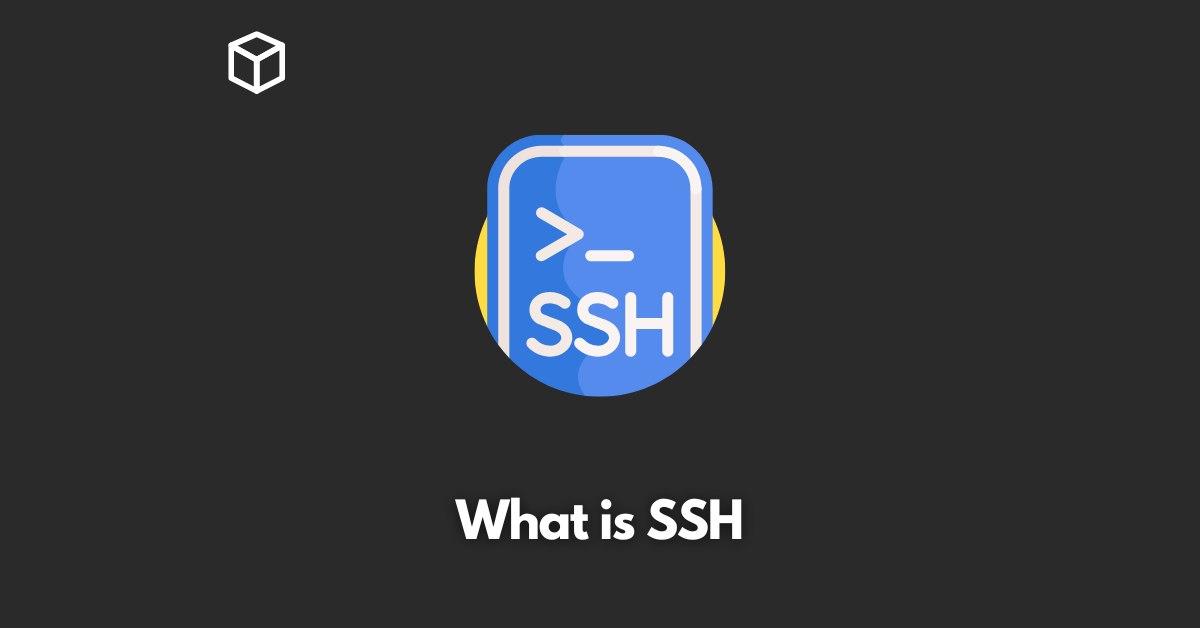Secure Shell (SSH) is a protocol that enables secure communication between two devices over an insecure network.
SSH is widely used to remotely access and manage servers, securely transfer files, and forward ports.
In this article, we will dive into the details of SSH, its history, and how it works.
We will also explore different use cases and best practices for setting up and configuring SSH.
How SSH works
Overview of the SSH protocol
SSH is a protocol that establishes a secure connection between two devices over an insecure network.
It uses a combination of public key cryptography and symmetric key cryptography to encrypt and authenticate the communication.
SSH also provides secure tunneling for other protocols, such as FTP and X11.
Encryption and authentication methods used in SSH
SSH uses a variety of encryption and authentication methods to ensure the security of the connection.
The most widely used encryption method is Advanced Encryption Standard (AES) in conjunction with the Secure Hash Algorithm (SHA) for integrity checking.
SSH also supports other encryption methods such as Blowfish and 3DES. SSH uses public key cryptography to authenticate the client and server.
Each device has a unique public key and a private key that is used to encrypt and decrypt the communication.
Demonstration of a basic SSH connection
To demonstrate a basic SSH connection, we will use the “ssh” command on a Linux or macOS terminal.
First, we need to know the IP address or hostname of the server we want to connect to.
Then, we can use the following command to initiate the connection:
ssh username@server_ip_or_hostnameUse cases for SSH
Remote access and management of servers
One of the primary use cases for SSH is remote access and management of servers.
SSH allows administrators to remotely access and manage servers, without the need for a physical connection.
This is especially useful for managing servers that are in different locations or for providing remote support to clients.
Secure file transfer with SFTP and SCP
Another use case for SSH is secure file transfer. SSH includes two secure file transfer protocols, SFTP and SCP, which allow for the secure transfer of files between two devices.
Both SFTP and SCP encrypt the data during transfer to protect it from eavesdropping and tampering.
C. Port forwarding and tunneling
SSH also supports port forwarding and tunneling, which allows you to securely forward traffic from one device to another. This can be useful for accessing network resources that are not directly accessible, such as a database server behind a firewall.
SSH as a VPN alternative
SSH can also be used as an alternative to a Virtual Private Network (VPN) for securely connecting to a network from a remote location.
SSH provides a secure tunnel for all network traffic, making it a secure and cost-effective VPN alternative.
Setting up and configuring SSH
Installing the SSH server and client
Installing the SSH server and client is relatively straightforward.
On Linux and macOS, the SSH server and client are typically included with the operating system.
On Windows, you can use a tool such as PuTTY to connect to an SSH server.
Generating and managing SSH keys
Generating and managing SSH keys is an important aspect of securing an SSH connection.
SSH keys are unique and are used to authenticate the client and server.
It is important to keep the private key secure and to regularly rotate the keys to maintain security.
Configuring the SSH server and client
Configuring the SSH server and client is the next step after installing and generating keys.
This includes setting up the correct permissions and settings on the server and client to ensure a secure connection.
It is important to disable any unnecessary options and to use the latest version of SSH to take advantage of the latest security features.
Securing SSH with best practices
Securing SSH with best practices is crucial to maintaining the security of the connection.
It includes using strong passwords and key passphrases, regularly rotating keys, and disabling unnecessary options.
Further, it is important to keep the SSH server and client up to date with the latest security patches.
Advanced SSH features and usage
SSH Agent and key forwarding
SSH Agent and key forwarding are advanced features that allow for even more secure connections.
SSH Agent allows you to use your SSH key without the need to enter the passphrase every time.
Key forwarding allows you to use your local SSH key when connecting to a remote server, eliminating the need to have a copy of the key on the remote server.
SSH config file and command-line options
The SSH config file and command-line options allow for more advanced control over the SSH connection.
The config file allows for the creation of shortcuts and the use of specific options for different servers.
Command-line options allow for even more control over the connection, such as specifying a specific port or key to use.
SSH and Git integration
SSH and Git integration allows for secure and seamless integration between the two tools.
This allows for the use of Git over SSH, eliminating the need for HTTPS authentication.
Using SSH with other tools and services
SSH can also be used with other tools and services, such as databases and cloud services.
It allows for secure and convenient access to these resources, even when they are not directly accessible.
Conclusion
In this article, we have covered the basics of SSH and its many uses.
We have discussed how SSH works, the encryption and authentication methods used, and different use cases for SSH.
We have also covered best practices for setting up and configuring SSH and advanced features such as SSH Agent and key forwarding.
SSH is a powerful and versatile tool that is essential for secure remote access and management of servers, file transfer, and more.




